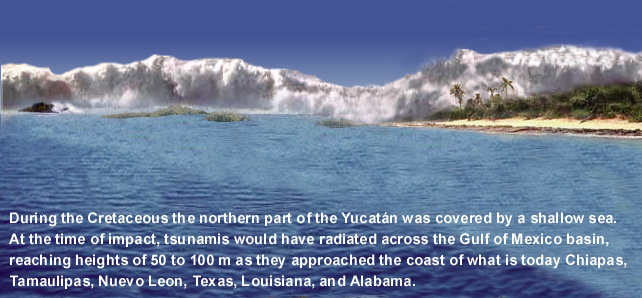It
is generally accepted now that a 10-kilometer
diameter comet or asteroid slammed into
the Earth 65 million years ago and caused the
extinction of around 50% of the species on the
planet at the time.
The extinction was caused by tidal waves and fires,
but mostly by climatic changes that occurred following
the impact:
Both the acid rain and the dust cloud probably stayed
in the atmosphere for years (or more?).
The result is that many photosynthesizing
organisms which are low on the food chain died out,
and the effects rippled all the way to the top of the
food chain.
All of these conditions altered the climate of the
time and stressed the plants and animals, and many
of them did not survive. Remember from our evolution
discussion though that a stressed condition often
produces dramatic evolutionary changes. New organisms
were able to succeed in the aftermath of the
impact and its global effects. Some of those new
organisms were the mammals.
http://www.lpl.arizona.edu/SIC/impact_cratering/Chicxulub/Regional_Effects.html
